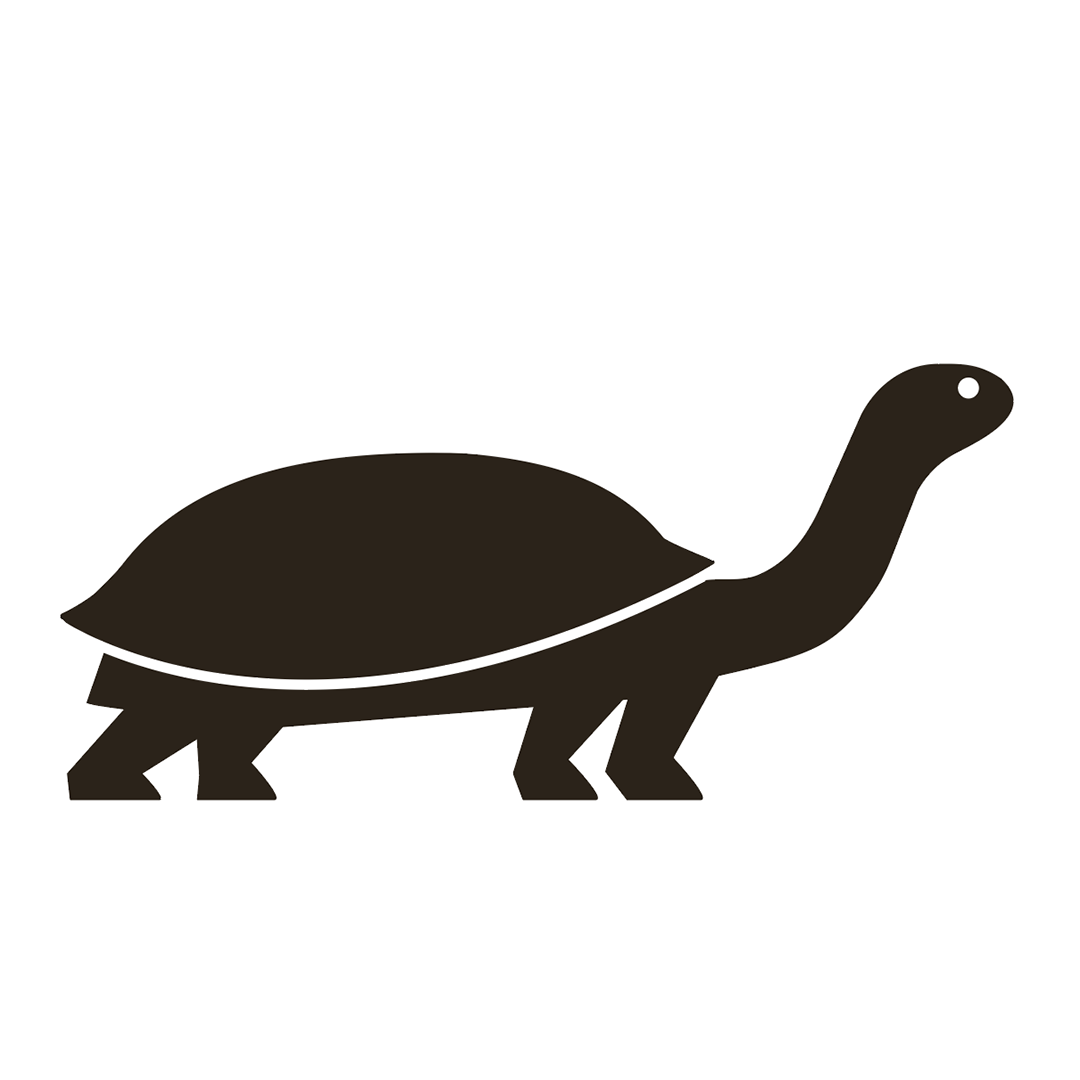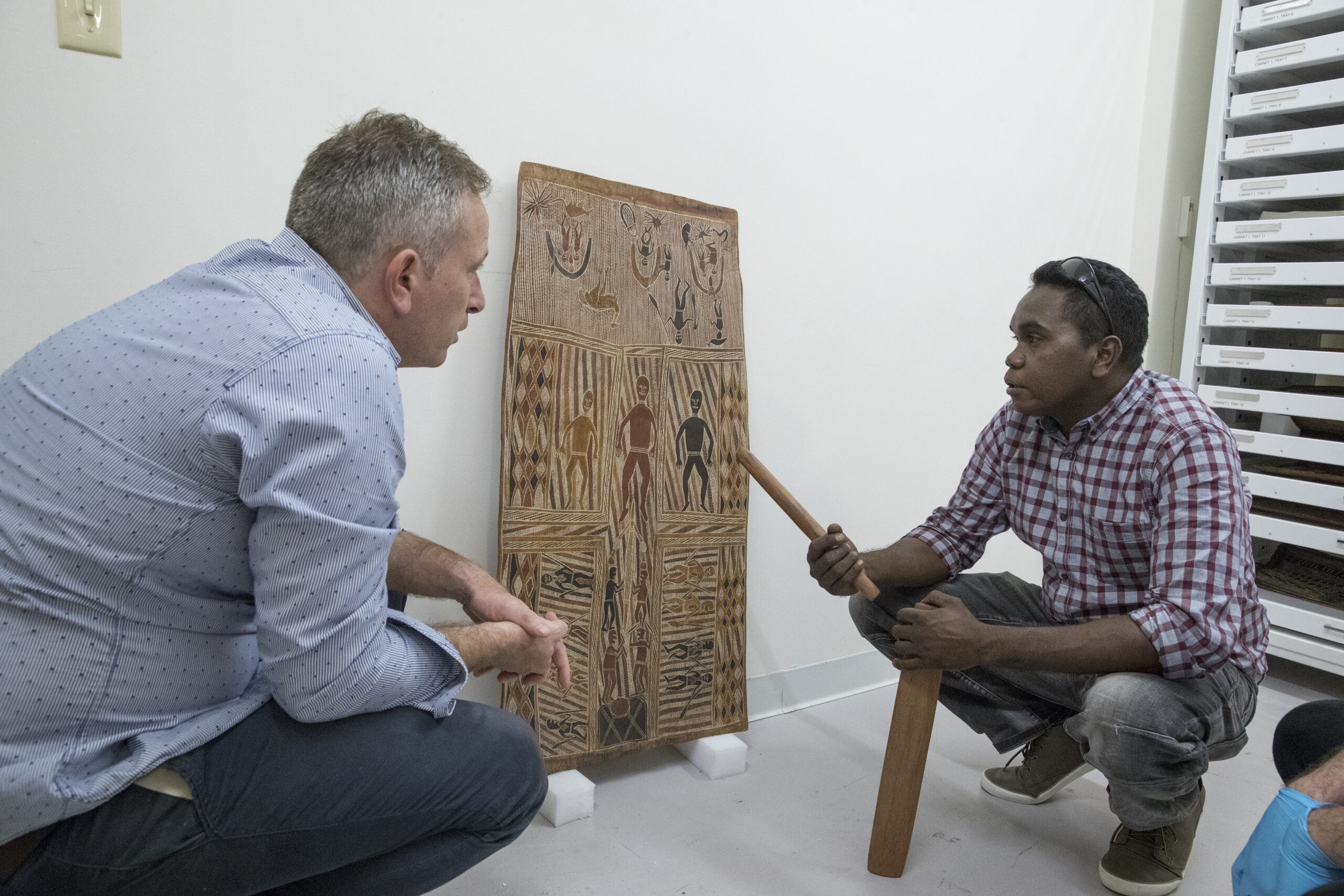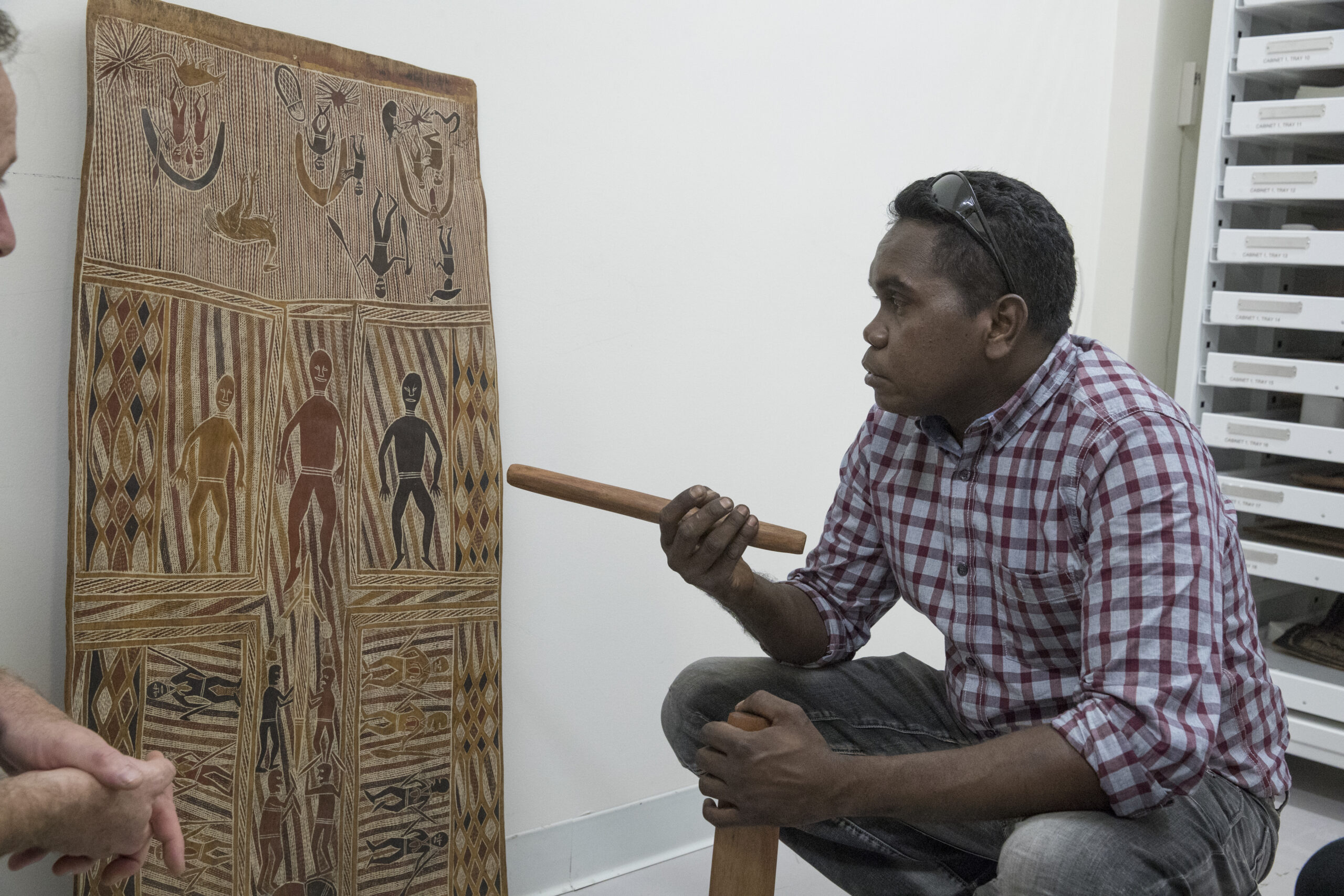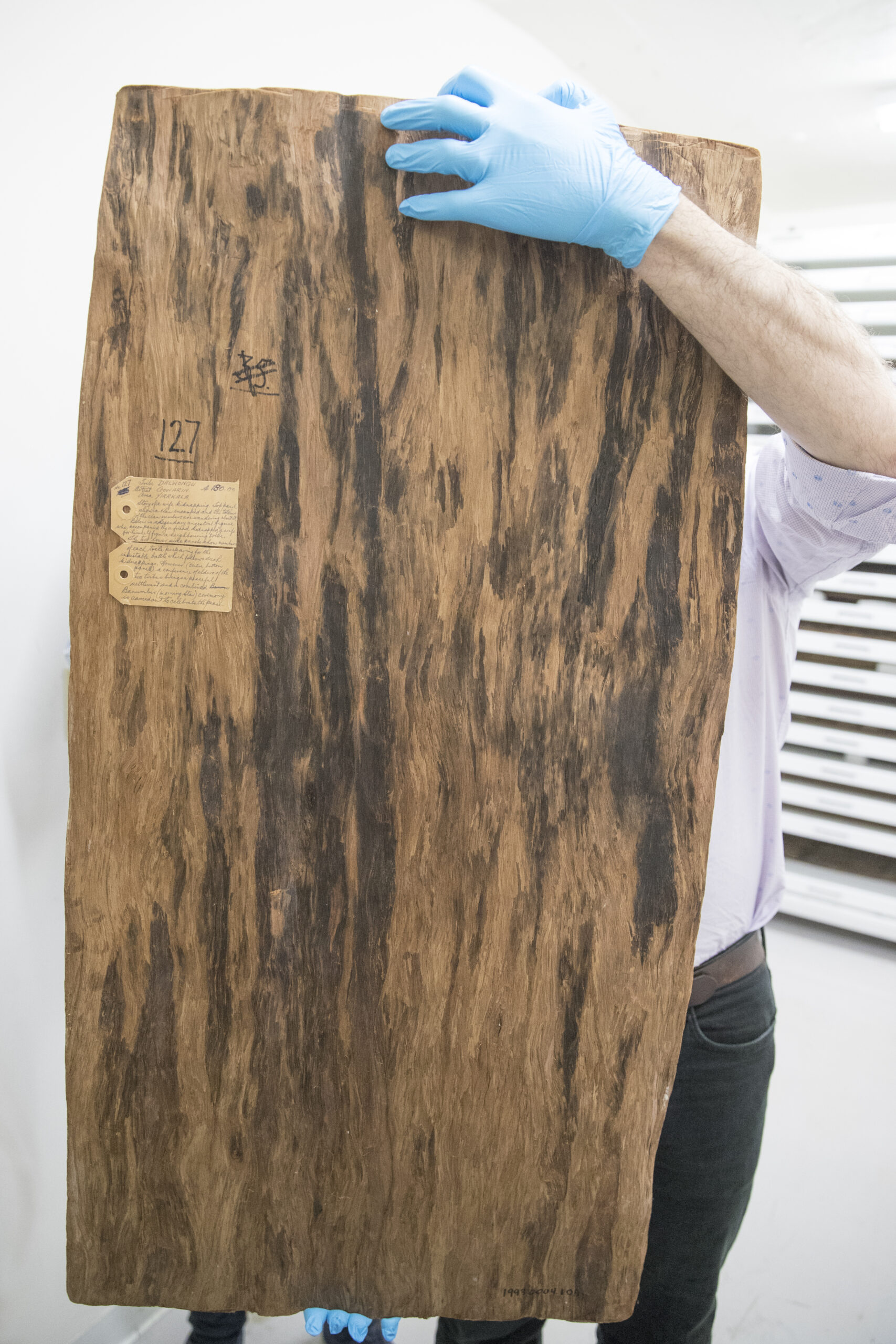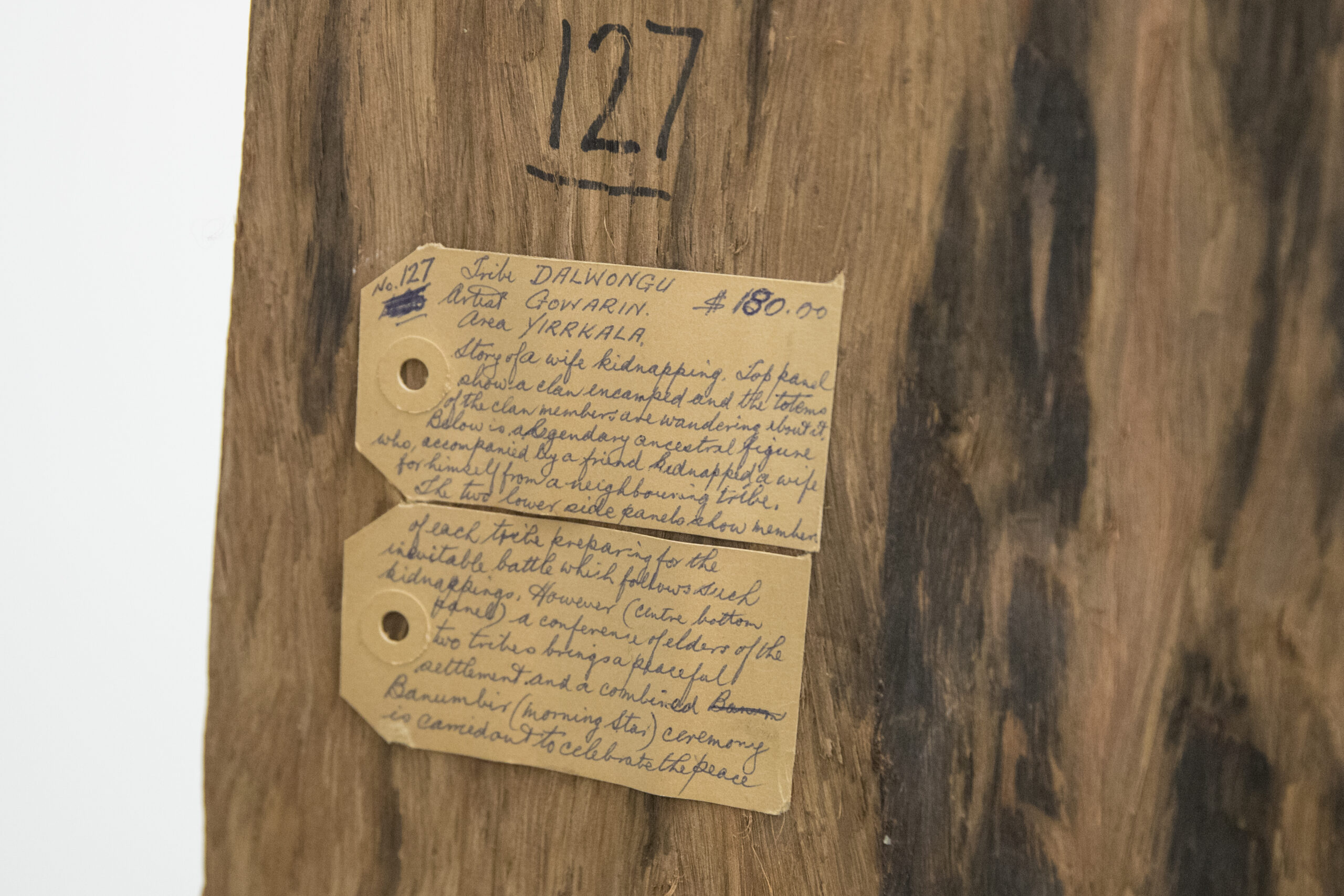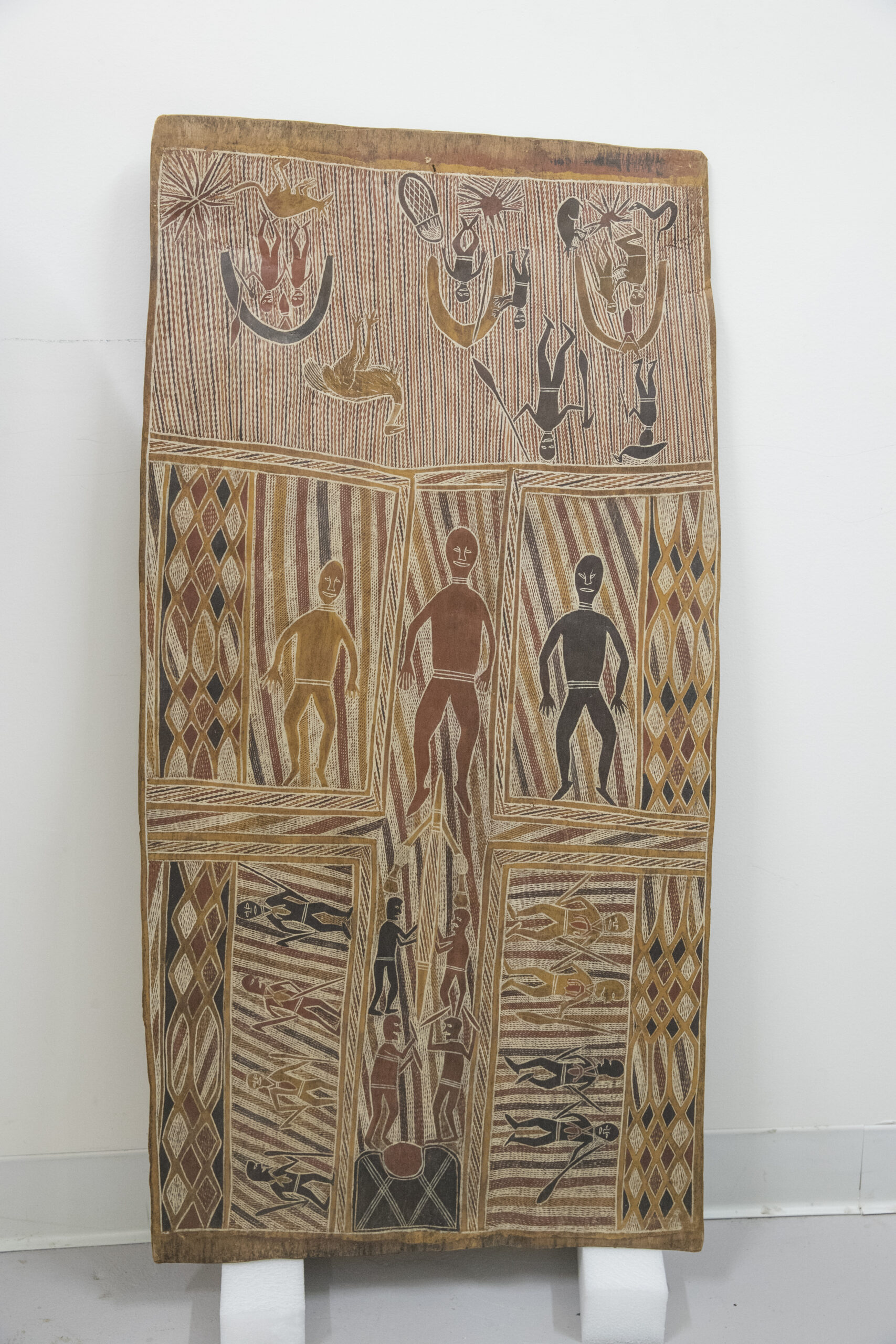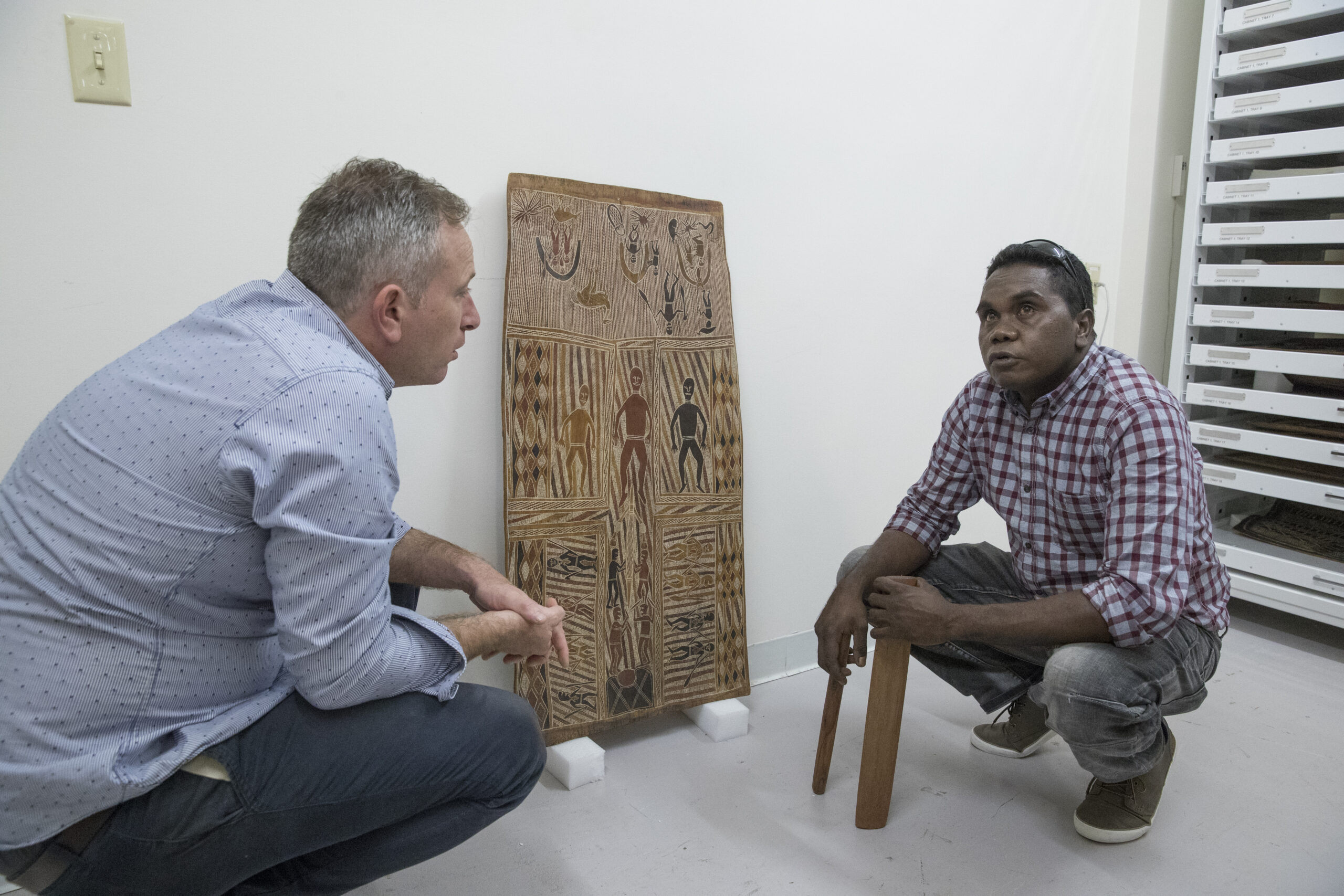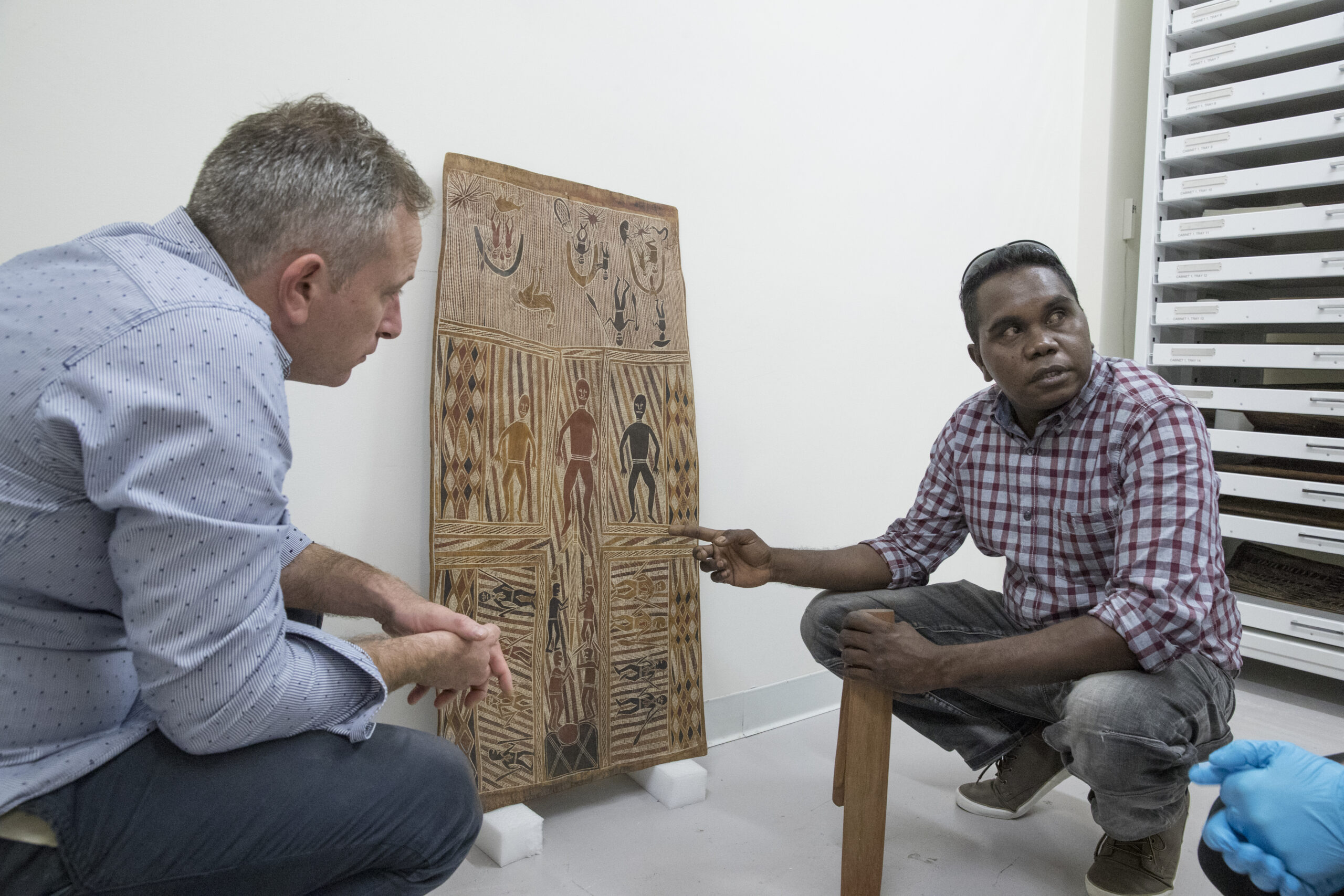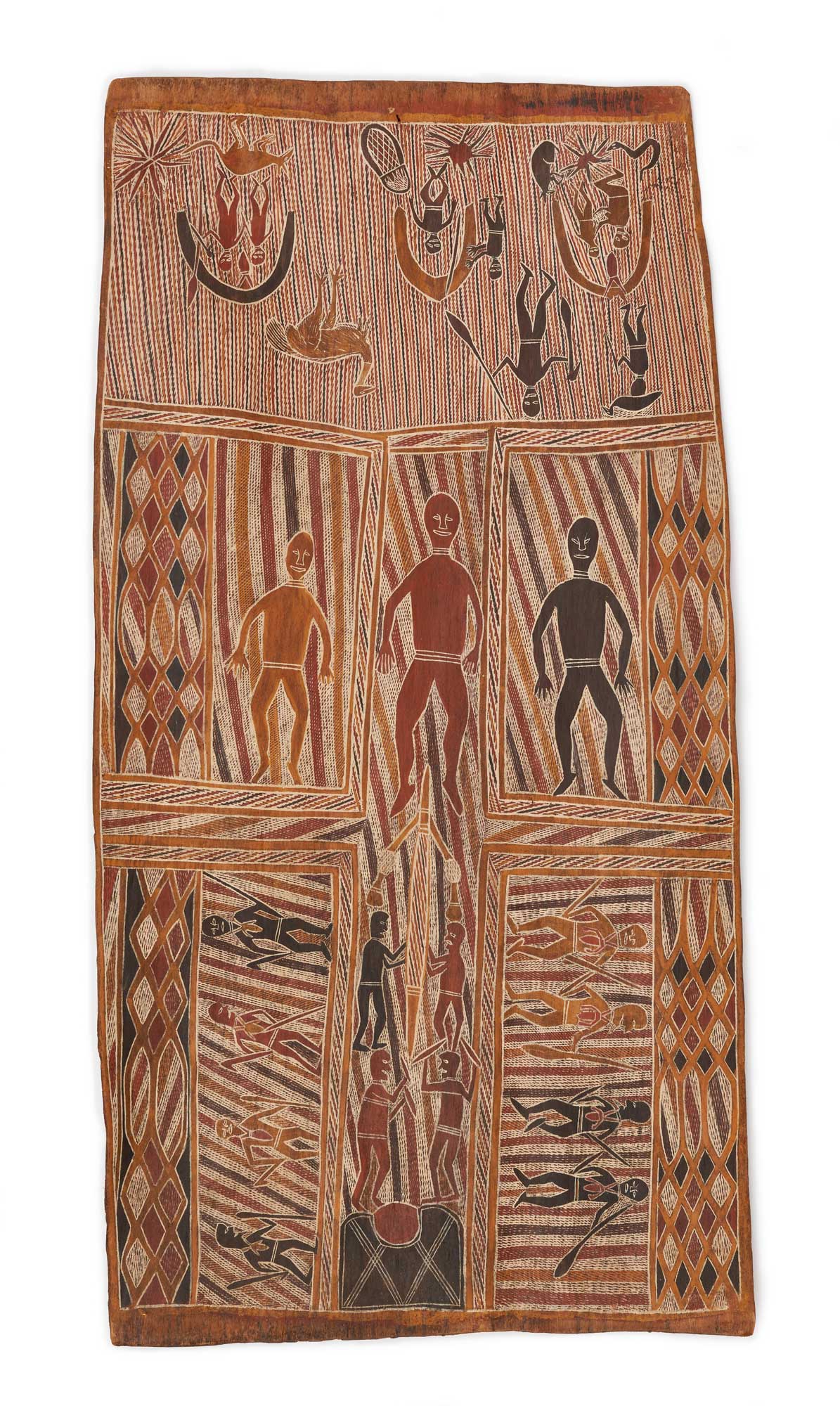
"There were three ancestral beings: Barama, Ḻany’tjuŋ and Galparrimun. Barama came from the place called Mulkanayŋu, near Gäṉgaṉ. There he created the Law. He was lying down in that place and he told the other two ancestral beings the Law, and instructed them that Ḻany’tjuŋ must journey upwards (north) and Galparrimun must travel downwards (south) sharing this Law with all the Yirrtja clans.
Barama stayed lying down there, chanting, when his clan speared him. He came out from that place wearing sacred armbands on his upper-arms. As he came out he chanted “Here I am. Here I am," and lay on the ground, wearing his sacred armbands. He chanted to all of the different clans as he went into the water, waist deep, and stepped on the white clay beneath the waters at Gäṉgaṉ. As he went into water he transformed into a tree.
This is a story that we have never told. We have only listened to our elders telling the story. My fathers and also my fathers’ fathers told us this story, and now this Law is shared by all the Yirritja clans, telling how Barama called out, identifying himself and his Law. And this is the story we must tell you and this is how it must be told. "
– YINIMALA GUMANA
More Info
This painting was acquired by Edward L. Ruhe sometime before 1967. The image is divided into two sections. The lower two-thirds of the bark depict the great Yirritja Creation Barama, flanked by his disciples Ḻany’tjuŋ and Galparrimun. They are shown distributing Law and ceremony to the Yirritja clans, who are assembled in the lower third.
At the top of the bark, Gawirriṉ has shown a more mundane subject, possibly relating to the kidnapping of a woman near the same area. The effect of this bifurcation is to illustrate the inherent connection between the spiritual and everyday worlds. Beneath every place and history lies a deeper spiritual well.
– Kluge-Ruhe Aboriginal Art Collection of the University of Virginia
Additional Information
Decade
Before 1967
Medium
Natural pigments on eucalyptus bark
Dimensions (IN)
41 x 21
Dimensions (CM)
104.1 x 53.3
Credit
Kluge-Ruhe Aboriginal Art Collection of the University of Virginia. Edward L. Ruhe Collection. Gift of John W. Kluge, 1997. 1993.0004.109.
Narrative
Dhaḻwaŋu
The Dhaḻwaŋu clan belongs to the Yirritja moiety. The most important Dhaḻwaŋu songlines relate to...
Songline
Barama and Lany’tjung
There were three ancestral beings: Barama, Lany’tjun and Galparrimun. Barama came from the place called...
Location
1960s
The 1960s were a decade of tumult and triumph for Yolŋu art and artists. In...
About The Artist(s)
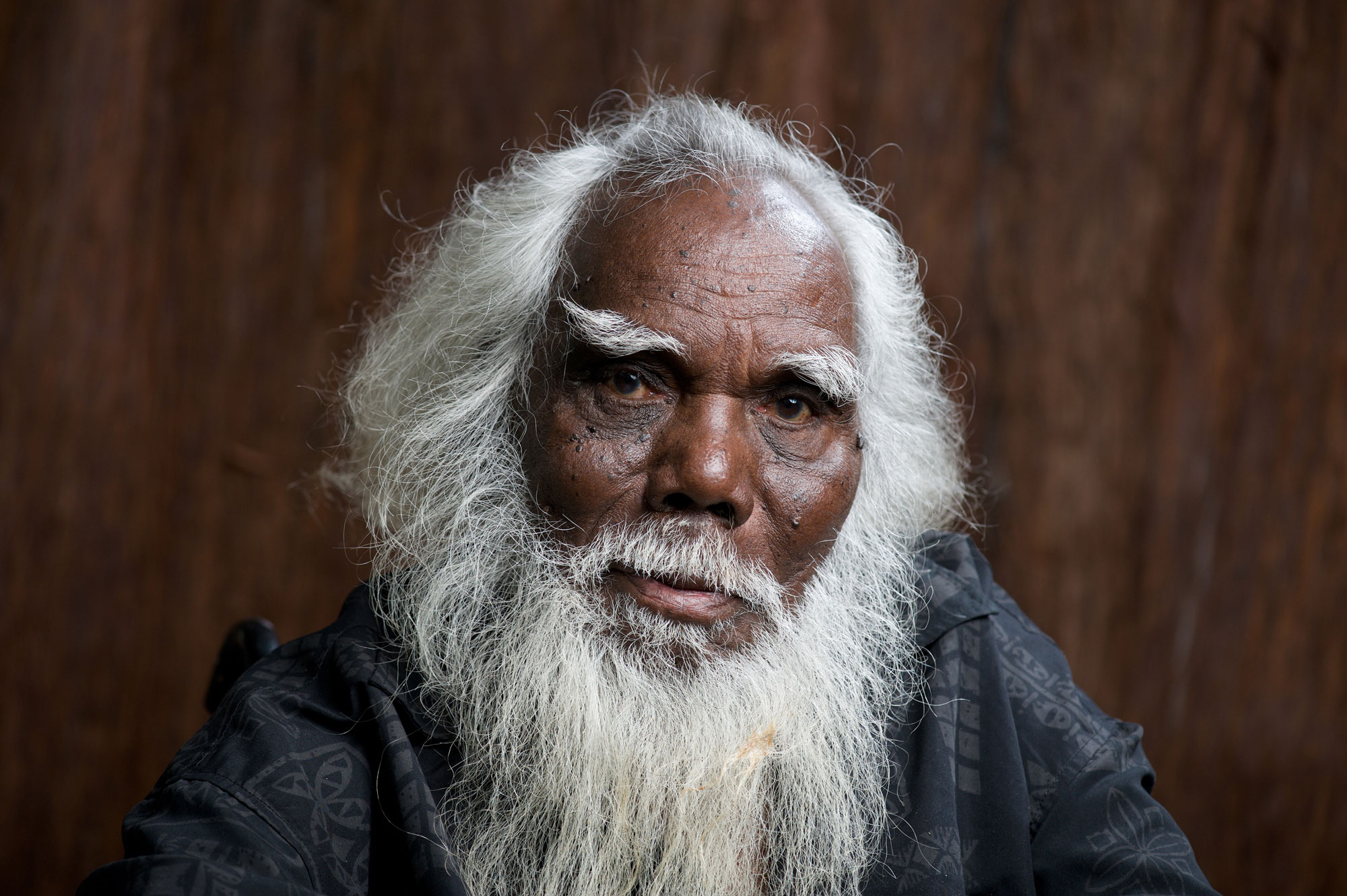
Clan
Dhaḻwaŋu
Artist Dates
c.1935-2016
Alternative Names
Gawurin, Gouarin, Gawarrin, Gawirrin, Garwirin, Gawerin, Joe
Dr. Gawirriṉ Gumana AO
Gawirriṉ Gumana was one of the most significant Yolŋu leaders of modern times. In 1992, he was ordained a minister of the Uniting Church. In 2002, he won the National Aboriginal and Torres Strait Islander Art Award, and the following year he was made a member of the Order of Australia. In 2007, he received an honorary doctorate from Charles Darwin University. He was the named plaintiff in the 2008, the High Court case Gumana vs. Northern Territory Government, which first recognized Indigenous sea rights in Australia. In 2009, he was awarded the Red Ochre Award for lifetime services to Indigenous art and culture.

